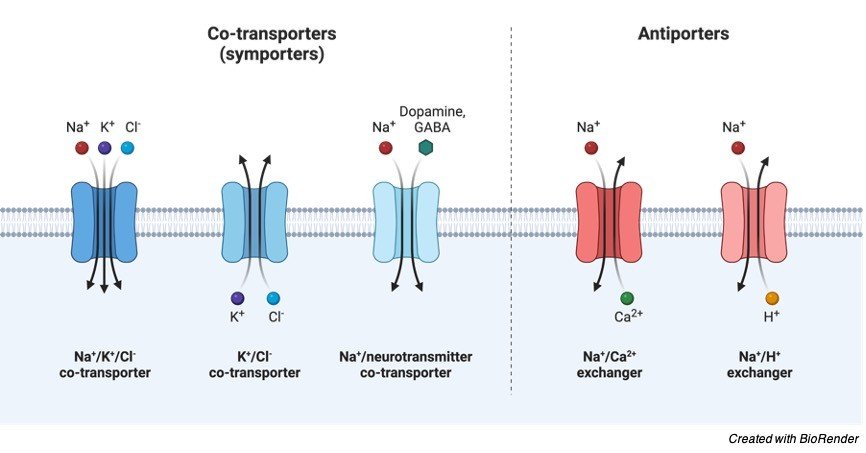About PhD In Psychology
Minerals and water are transferred from roots to the plant by passive forces of movement namely diffusion and facilitated diffusion; does not constitute to effective transport of the molecules into the cells. Regular metabolic functions require nutrients to enter the metabolic cycle of cells to produce energy for the plant physiological functions. Dynamic molecular movement inside cell and its organelles, between cells and between external environment and plants require other transport mechanism to tag along passive transport.
Active transport is an effective means of transportation of ions and molecule along transcellular pathway. Energy is utilized by the dephosphorylating energy currency of the cells produced by oxidative phosphorylation and Electron Transport Chain in mitochondria of every cell; is effective in transporting voluminous number of ions from the cells. The transport of ions actively involves movement against the gradient of ions and other nutrients constitutes a potential difference electrochemically for the movement of ions and other nutrients.
Movement of ions from cells to the extracellular space and back to cell is contributed by the potential difference between a cell and the external environment constituting a potential difference: Transmembrane potential across these; acts as a driving force for the transport of the ions and charged molecules.
Donan Equilibrium
Donan equilibrium explains the transmembrane potential difference because of the movement of charged ions and the equilibrium of the cell in electrochemical terms. The cell is dynamic and are negatively charged predominantly. Assuming high K+ concentration inside the cell; K+ movement is a simple diffusion or facilitated diffusion pertaining to the protein channels and concentration gradient; to maintain an equilibrium out of the concentration terms. But the mechanism of the cell and its ability not only involves the concentration gradient for the movement but are dependent on both electric and chemical potential difference.
Electrochemically, the K+ ion is coupled with respective cations; are attracted back to the cell by the negative charges. An equilibrium is achieved when the force of concentration gradient pulling the K+ ions outside the cells and electrical gradient pulling K+ inside the cells. Hence a Donan equilibrium is achieved and the mechanism is similar for most of the ions and molecules. Donan’s equilibrium is also termed as Gibbs – Donan equilibrium; as Gibb’s had the equation predicted long back before Donan’s discovery.
Carrier Concept in Active Transport
A general mechanism of movement of ions across the cell membrane mediated by energy dependent protein molecules is clearly explained by the carrier concept. The transmembrane proteins act as a mediator for the movement of ions by binding to the ions and release them to the external or internal membrane based on the requirement.
This mechanism takes place in 3 steps:
Initially, carrier molecules are activated by the dephosphorylating ATP mediated kinases.
Activation of carrier binds to the ion forms a carrier – ion complex
On release of the phosphatase the ions and the carrier molecules are released closing the membrane.
Two theories were put forth based on the carrier concept and are named as Ludegardh’s cytochronme theory and Bennet – Clark’s Hypothesis.
a). Ludegardh's Cytochrome Theory for Active Transport
Ludegardh’s cytochrome theory was formulated by Ludegardh and Burstrom in 1933, assumes 3 postulates. They are: Active transport of anion is present and cation is passively diffused and are independent of anions. Anions are transported through cytochrome system of electron transport chain. Cytochrome acts as a carrier. Oxygen gradient exists across the external and internal surface with oxidation at external surface moves the anion to the internal surface where the reduction takes place. Main disadvantage of the theory is that the carrier molecules present are presumed to transport the anions and cations are transported through passive diffusion.
b). Bennet - Clark's Hypothesis
Bennet – Clark’s Hypothesis proposed in 1956 involves ATP carrier mechanism; associates with phosphatide transport across impermeable membrane. The carrier transports both anion and cation making the protein molecule an “amphoteric” molecule.
Active Transport Types
Active transports are similar inside and across different cell species; mediated by special protein structures in transmembrane walls of the cell directly utilize energy to facilitate the movement of ions across the cell against the concentration gradient are termed as “PUMPS”. Other protein channels utilize energy produced by the potential difference for the movement. Based on this the Active transporters are divided into:
Examples of Active Transporters

Primary Active Transporters
Primary active transport includes movement of ions and nutrients across semi permeable membrane through carrier proteins powered by ATPase. ATPase are protein pumps which transports ions against contraption and electric gradient from inside to outside of the cell and vice versa. The carrier molecules are termed as pumps; facilitating the movement of ions against concentration gradient.
Active transport of ions is further classified as Electrogenic or electroneutral transport based on the potential difference created by the net movement of the ions. Electrogenic transport is well demonstrated by Na/K pump in humans where exit of 3 Na ions 2 K+ ions are taken in; resulting in net outward movement of positive charges making it electro genic.
Similarly, in contrast to Na/K pumps; H /K+ pumps are present where for every exit of H+ ion One K+ ion enters the cell results in a neutral potential difference across the cell membrane. This H+ /K+ ion pump is an example for electroneutral transport. In animals the principal ion in transport to maintain membrane potential is Na+ but in plants H+ ions play important role in movement across the membrane.
The primary transporters implants are predominantly present in Plasma Membrane is H+ ATPase, Vacuolar tonoplast has specialized Hiaasen H+ PP ase in Golgi cisternae also has similar active transport coupled with ATP molecules. Apart from K+ ions Ca+ ions are tyransported and regulated as they act as ligands in many transmembrane proteins. Further primary active transport protein pumps are classified based on their function at different parts of the cell.
Proton Pumps
H+/ ATPase pumps are predominant in plants where the outward transport of H+ ions constitute a potential gradient coupled by ATP utilization in most of the pumps but the H+ pump in chloroplast utilizes light as a source of energy to drive the ATP synthesis. Proton pump allows the transport of ion in single direction hence it is an uniport and are electrogenic.
Further based on their structure the H+ ATP pumps are classified as: F type, V type and P type.
• F type is present in thylakoid membrane utilize the energy created by the potential difference across the membrane to synthesis ATP.
• P Type is the ATP ase present in the Plasma membrane dependent on Mg; drives one H+ ions outside the cell on ATP dephosphorylation.
• V Type is present in the vacuoles of the cells are similar to F type are specialized in making the vacuoles acidic to the plasma membrane pH due to the accumulation of organic and inorganic anions.
Ca Pumps
Ca+ pumps are similar to ATP as present in P type pump in the plasma membrane having a polypeptide chain of about 110kD with extended N – Terminal domain. On Hydrolysis of ATP; 2 Ca+ ions are transported across the membrane regulating the Ca+ ions in cytosolic pool as excess of Ca+ in the cytoplasm may mediate many enzymes activity. Ca binds with calmodulin has inhibitory effects in Ca pump acts as a negative feedback loop to release excess of Ca to external environment.
H+ Pyrophosphatase Pump
ABC Transporters: ATP Binding Cassette Transporters are largest protein molecules found in living organism are similar to P type channels. These are not electrogenic transporters which are involved in nutrient uptake in plasma membrane and takes up molecules for storage in vacuoles. They mainly transport uncharged substances out of cell without any changes in charge and electrochemical gradient.
Secondary Active Transporters
Secondary active transporters are indirect active transporters which utilize the proton motive force created by the H+ gradient to move other minerals and nutrient uptake as the direct active transport moves H+ or Ca+ outside the cell. Secondary transporters involve Symport and Antiport where respective proteins present in the membrane facilitates the transport of the molecules.
Symport involves the movement of molecules and nutrient uptake on same direction involves H+ ions move against the protein gradient. Antiport as the name indicates the H+ ions move against its gradient is coupled with opposite directional movement of mineral or nutrient to be transported. Active Transport includes the transport of ions and nutrients. ATPase in cell membrane is high in number and are varied in action.
Active Transport Citations
Share












